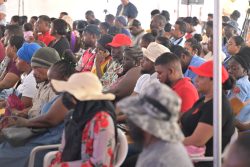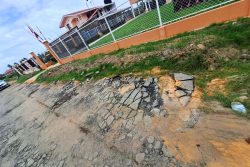Dear Editor,
Very little is written about the role that enslaved African Muslims played in the history of the Guianas, but for now, we will focus on Guyana. While the reconstruction of the history of enslaved Africans in Guyana is difficult due to the horrors of slavery, and the fact that almost 99% of the archival materials are in Dutch, it may cause some unease for the descendants of Africans in Guyana today. Not to mention the “Whiteman’s burden made Africa into a dark corner of the world” that they claimed was void of any civilization, “Black” Egypt (Nubia), Kush, and Axum were suddenly not part of Africa. While enslaved African Muslims may not have had in their possession the Holy Quran, many had it committed to memory which their masters could not burn.
According to Emilia Viotti da Costa in her book Crowns of Glory, Tears of Blood, some enslaved Africans involved in the 1823 Demerara rebellion were Muslims. An African driver from plantation Brothers by the name of “Bob, was a Mus-lim, and was known as the Mahometan.” Incidentally, Quamina the nominal leader was a member of the Akan peoples. During the trial of the ‘ringleaders,’ one African who testified against them was a Muslim who demanded to take his oath the Islamic way. Also, according to Norman Cameron in his book 150 Years of Education In Guyana (1808- 1957) refers to “two Mohammedans” Romeo and Jason who were ordained by the Christian missionary on Plantation Le Resouvenir as deacons; Romeo was ordained in 1808 and Jason in 1814.
Despite the horrors of enslavement, traces of their Islamic faith were referenced in the early 1800s in several books that made reference to materials written in Arabic found among slaves in British Guiana. In Thomas Staunton St Clair’s 1834 work titled A Soldier’s Sojourn in British Guiana, 1806-1808 he mentioned a slave plot planned for Christmas Eve in 1807. St Clair was a British soldier stationed in Demerara for three years, from 1805 to June 1808. From his personal recollections, he mentioned that “a slave woman who lived with a young Scottish overseer on a plantation on the East Coast Demerara betrayed the conspirators.” The ringleader was her own father. Based on her accusation, at least 20 slaves were arrested, while her father and a few others were hanged. One piece of evidence that was presented during the trial was a letter supposedly written by one of the rebels in the Arabic script and addressed to the slaves, however since no member of the court could read the letter its purport could only be guessed at. This suggests that her father was a Muslim and one with a strong faith.
More importantly, in 1836, two years prior to the arrival of the first Hindustani Muslims in British Guiana, the London Missionary Society reported that Thomas Lewis, a freed African, was educated in England, had started a school in Union Chapel in New Amsterdam. Lewis was formerly a Muslim known as Toby. Toby, the Hausa Muslim could read the Arabic text of the Holy Quran.
In Berbice, the majority of enslaved Africans were from the Congo and Kromanti regions. Looking at the 1819 slave population of Berbice (Table S3.4. Higman 1984), there were a significant number of African-born Muslims in the colony. Out of the total African-born slaves (12,867) only 1,198 (or 9%) were specified and out of this number 235 (or 20%) were Muslims. These were distributed as follows: – 111 Mandingos from Senegambia and Bambara (Mali/Burkina Faso); from Sierra Leone there were 27 Temnes, 27 Fullahs and 18 Susus (Guinea and Sierra Leone); 14 from the Gold Coast, and 38 Hausas (Nigeria, Niger etc).
During this month of Ramadhan, 2016, we would like to pay homage to all enslaved Africans murdered and assassinated during the African Holocaust, and to bring attention to a few who refused to bear the names of their slave master.
Yours faithfully,
Ray Chickrie
Shabnam Alli









